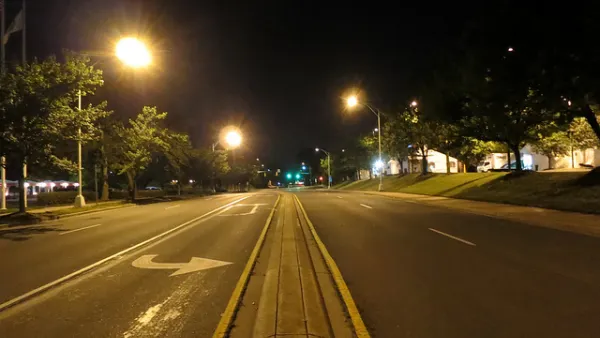Little Asphalt minimizes pavement in cities, towns, and suburbs so that real estate can be used for higher value purposes—such as buildings and people-centered activities.
I have written about the problems of Big Asphalt. The opposite is Little Asphalt, which can be described in three ways.
1) It’s an approach that minimizes pavement in cities, towns, and suburbs so that real estate can be used for higher value purposes—such as buildings and people-centered activities. Little asphalt disperses traffic rather than concentrates it. It eases automotive traffic through expanding opportunities for walking, bicycling, transit, and other ways to get around. It reduces impervious surfaces that create stormwater runoff.
2) It’s a place dominated by the character of the surroundings and activities rather than the pavement. Little Asphalt is a magnet for people, not cars. Automobiles are usually welcome—but only at speeds that do not threaten the safety of the people or the character of the place.
3) Little Asphalt represents the interests that benefit from such places—In this case, the communities themselves, the people who live and use these communities, and the landowners who will benefit from higher values created by Little Asphalt.
Little Asphalt recognizes that pavement itself is a big part of sprawl—not just houses spread out across the landscape, a car-oriented lifestyle, big box stores, and disinvestment in cities. Vast parts of America are over-paved in a relentless—and often futile—pursuit of frictionless driving. Highways slice through cities and downtown buildings are leveled in favor of parking lots. Most of the suburbs are not walkable because of excess paving since the middle of the 20th Century. Little Asphalt runs this process in reverse and is essential for creating more walkable, people-centered places.
FULL STORY: The Little Asphalt solution for sustainable, healthy communities

Analysis: Cybertruck Fatality Rate Far Exceeds That of Ford Pinto
The Tesla Cybertruck was recalled seven times last year.

National Parks Layoffs Will Cause Communities to Lose Billions
Thousands of essential park workers were laid off this week, just before the busy spring break season.

Retro-silient?: America’s First “Eco-burb,” The Woodlands Turns 50
A master-planned community north of Houston offers lessons on green infrastructure and resilient design, but falls short of its founder’s lofty affordability and walkability goals.

Test News Post 1
This is a summary

Analysis: Cybertruck Fatality Rate Far Exceeds That of Ford Pinto
The Tesla Cybertruck was recalled seven times last year.

Test News Headline 46
Test for the image on the front page.
Urban Design for Planners 1: Software Tools
This six-course series explores essential urban design concepts using open source software and equips planners with the tools they need to participate fully in the urban design process.
Planning for Universal Design
Learn the tools for implementing Universal Design in planning regulations.
EMC Planning Group, Inc.
Planetizen
Planetizen
Mpact (formerly Rail~Volution)
Great Falls Development Authority, Inc.
HUDs Office of Policy Development and Research
NYU Wagner Graduate School of Public Service


























